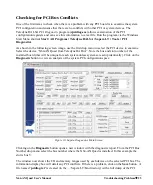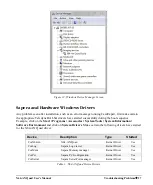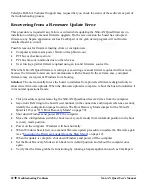
X64-AN Quad User's Manual
Theory of Operation
39
Camera Control
Pulse Generator
X64-AN Quad has three independent timers per input that control pulse generation for camera
controls. This allows to position pulses precisely (to a resolution of 1
s) relative to the trigger event.
Pulse generation flexibility is required to support a wide range of camera control modes (edge pre-
select, pulse width control, E-Donpisha, etc.).
An independent timer is available for each of the following signals:
VS
Frame Reset
Strobe
VS and Frame Reset timers can be combined to generate a double-pulse on the same camera signal
control pin. This is required for some camera modes, like long time exposure.
Each timer has the following capabilities:
Programmable polarity (active high or active low)
Programmable delay from trigger event (up to 65 seconds)
Programmable duration (up to 65 seconds)
Timer granularity (timer step size) is 1
s when the delay and duration values are below 65ms.
Granularity reduces to 1ms for a delay or duration above 65ms. Delay and duration always have the
same granularity level. Therefore even if only one timer has the reduced granularity of 1ms, all timers
then have the same 1ms step size.
Each timer can be started by any of the following events:
VS (default)
External trigger
Internal trigger
Software trigger
Frame Reset
Frame reset—also known as camera reset or camera trigger—is a signal sent by the X64-AN Quad to
the camera which triggers an acquisition. One frame reset signal is available per X64-AN Quad input.
The pulse duration and polarity are programmable. Frame reset can be triggered either by an external
trigger signal, an internal trigger, a software trigger or a VS event. After the trigger is initiated, an
internal frame reset counter counts up to a maximum of 65 seconds. This pulse is normally used to
control the exposure of the camera CCD (used with camera modes such as Edge Pre-Select or Pulse
Width Control).
















































